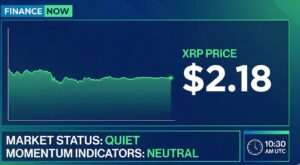Polygon has introduced a Chain Development Kit, which is open-source software. This kit can be used to create various layer 2 (L2) protocols in the Ethereum environment. It also relies on zero-knowledge proof (ZK-proof) technology, i.e., ZK-Powered Layer 2 Solutions, to ensure security and speedy confirmation of transactions.
Empowering Developers: The ZK-Powered Layer 2 Solutions on Ethereum
According to Jordi Baylina, co-founder and technical lead for Polygon, who spoke exclusively with Cointelegraph, the new tool, which is openly accessible on a GitHub repository, was designed to make it easier for developers to establish a ZK-powered layer 2 on Ethereum that is specifically tailored to their project’s needs.
In Baylina’s opinion, a crucial component is the Polygon CDK’s ability to automatically access liquidity across all of Polygon’s chains and the larger Ethereum ecosystem, offering “on-demand scale, without fragmenting liquidity.”
The Ethereum developer cited additional efforts at developing CDK-powered networks for various use cases, including platforms for creator or nonfungible tokens, decentralized finance, gaming, and social-specific platforms.
In addition, Baylina emphasized that the CDK offers a lot of flexibility. It can be customized for different app chains, like rollup or validium mode. It can work with zkEVM or other ZK-powered systems. It also supports various ways to access data, and you can customize native tokens and gas tokens. It can operate with centralized or decentralized sequencer modes and can even be used for permissioned networks with granular allowlists.
Baylina stressed the value of ZK-proof technology and reaffirmed Polygon Labs’ belief that it will play a crucial role in scaling Ethereum in the future. Using the Polygon CDK, he explained, chains are automatically connected to a shared ZK bridge and integrated into an interop layer, simplifying cross-chain communication.
He further gave an instance of there being thousands of chains in the Polygon ecosystem and how it becomes inefficient for each chain to submit proofs to Ethereum directly. Instead, the interop layer compiles proofs from these chains to confirm the status of all Polygon chains and submits a single ZK proof.
According to Baylina, the technology enables cross-chain transactions to be completed in under a minute and gives the impression of a single-chain environment.
Baylina further shared that the Polygon CDK’s architecture is unique in providing automatic access to shared liquidity via a ZK bridge and the interop layer of an L2 ecosystem protected by functional ZK-proofs.
In his last remarks, he emphasized their belief in ZK-proofs as the future of Ethereum scalability, stressing their fast finality and withdrawal timeframes as opposed to the week-long delays associated with fraud proofs in optimistic rollup Layer 2 solutions. He stressed that by using rigorous mathematical concepts, ZK-proofs improve chain security and cross-chain interoperability while doing away with the social-economic components that fraud proofs frequently demand.
Conclusion
Polygon’s recently released open-source Chain Development Kit (CDK) for Ethereum’s ZK-powered Layer 2 solutions provides developers with a flexible toolkit for customized L2 protocols. Because of the way CDK’s distinct architecture makes cross-chain communication easier, it is essential to Ethereum’s potential future scalability.




























